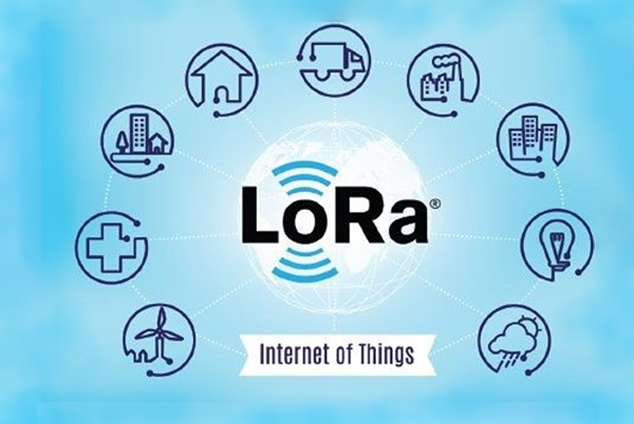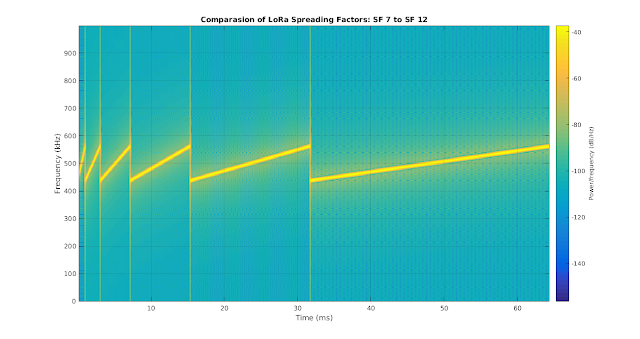LoRa: Mapping IoT's Future
Introduction
With the proliferation of data warehousing available worldwide thanks to the internet facility, the world is now going forward with AI, ML, and data analytics. In response to this changing need, the “Internet of Things” are changing their arbitrary attributes to be Omnipresent as the essential component of intelligence.
The Internet of Things, often known as IoT, is the ultimate information collector and executor of directed intelligence without human intervention. It consists of a Sensor, a Communicator, and a Processor. Currently, most IoT’s operate in one of three communication networks: Ethernet, Wi-Fi, or cellular 3G/4G/5G. These networks are expanding in terms of data rates but not in terms of distance, making them less frequently viable and affordable for industries where requirements for spread, distance, low power, low maintenance, and low data are mandatory. As a result, we are still behind in implementing IoT’s in many remote, challenging-to-access, and widely dispersed industries, including agriculture, animal husbandry, mines, transportation, warehousing, education, law & order, urban and rural development, etc. Lack of skill sets for creating specific IoT devices is not a problem; rather, the issue is the lack of an appropriate communication medium that can build a physical network with long distance coverage, very low power consumption, and low maintenance costs, even with a low data rate that would be sufficient for IoT’s and connecting them to the Internet.

LoRa Technology
LoRa is an affordable, long-range, low-power Internet of Things (IoT) technology that was created by the French company Cycleo in 2009 and then purchased by Semtech in 2012. The LoRa radio and modulation technology are both patented and have a closed source. Other chip manufacturers have received licenses from Semtech for its LoRa intellectual property. Since its founding in March 2015, the LoRa Alliance, an open, non-profit organization created to encourage the adoption of this technology, has grown to include more than 500 members.
The key feature of LoRa is that it operates in ISM bands with license-free sub-gigahertz radio frequency, such as 868 MHz in Europe and 915 MHz in North America. Therefore, utilizing LoRa in any jurisdiction does not require a separate license.
Amplitude shift keying, frequency shift keying, and phase shift keying are three common forms of basic modulation techniques used in digital communication, where the carrier’s amplitude, frequency, or phase alters in response to changes in the digital signal. The drawback of these methods is that the signal is quite susceptible to interference and might be easily jammed because the bandwidth is quite constrained. Distributed spectrum techniques, in which the signal is modified so that it is distributed across the full bandwidth, are being utilized to overcome this. Spread spectrum technologies include DSSS, FHSS, THSS, CSS, and many others.
Chirp Spread Spectrum
Chirp Spread Spectrum Modulation (CSS) is the foundation of the patented spread spectrum modulation technology known as LoRa. Wideband linear frequency modulated chirp pulses are used in the Chirp Spread Spectrum technology to encode data. A chirp is a sinusoidal signal that changes frequency over time across the whole bandwidth, either up or down (up chirp). This signal is modulated in accordance with the data to be conveyed and used as the carrier.
Three bandwidths are used by LoRa: 125 kHz, 250kHz, and 500kHz. The chirp utilizes the entire available bandwidth, and the spreading factors are, in essence, the chirp’s duration. LoRa uses spread factors ranging from 7 to 12. This transmits orthogonal signals at various data rates. Additionally, it offers processing gain, allowing transmitter output power to be decreased while maintaining the same RF link budget and extending battery life.

How LoRa achieves long range transmission with low power
LoRa (Long Range) achieves long-range transmission with less power by using a modulation technique that allows for efficient communication over extended distances. It utilizes a spread spectrum modulation, specifically chirp spread spectrum (CSS), which spreads the signal across a wide frequency range. This makes the signal more resilient to noise, interference, and fading, allowing it to travel longer distances without being significantly degraded.
Additionally, Lora devices use low data rates and adaptive data rate techniques. By sending data at lower rates, the signal can be received at lower signal-to-noise ratios, enabling longer communication distances. Adaptive data rate adjusts the data rate based on the quality of the link, further optimizing power consumption and range.
LoRa for STM32
To experience the hands-on working of LoRa, you can utilize our VAct customized embedded development boards. This board contains the serial interface to send and receive LoRa packets. This involves creating functions for transmitting data and receiving data, taking into account the LoRa modulation and error-correcting codes.
Conclusion
It is clear that LoRa wireless technology is going to play a big role in the IoT market. Interconnecting devices to create smart cities, industrial and commercial solutions, while reducing the limitations from other wireless technologies such as power and other overheads, is the key strength of LoRa.

